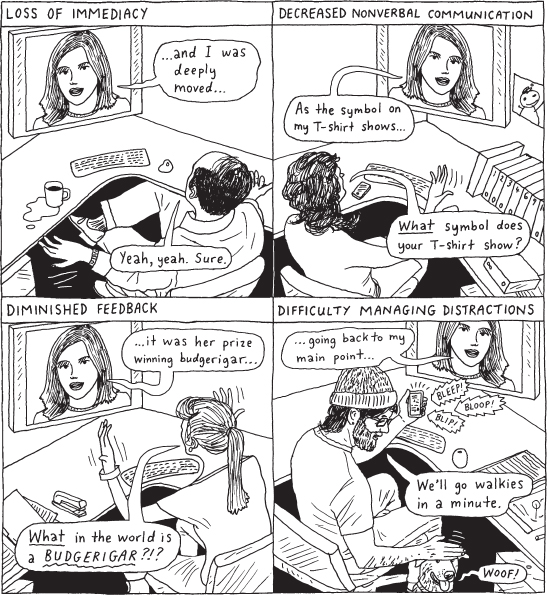Loss of Naturalness
Printed Page 447
Our brains are hardwired for face-to-face interaction. Since the Stone Age, humans have used facial expressions and sound as primary means of communication. Over time, evolution has resulted in adaptations that enhance the effectiveness of face-to-face interactions. For example, the location of the larynx, the development of the vocal tract, and accompanying changes in the brain now allow human beings to create the many sounds needed to speak modern languages. Similarly, adaptation of muscles in the human face enable a diverse range of facial expressions used to communicate.8
The naturalness of a communication medium is determined by the extent to which it matches the features of face-to-face interaction.9 Key factors that contribute to feelings of naturalness include sharing the same space, sending and receiving messages quickly, and being able to send and receive both verbal and nonverbal expressions.10
The human brain enables us to send and receive messages in our natural face-to-face mode with a minimum of effort. However, when we use a less natural medium, we face greater barriers to effective communication. In the following section, we explore some of the specific challenges caused by mediated presentations in terms of the naturalness we often take for granted in F2F communication. Unless otherwise noted, these challenges apply to both prerecorded and real-time communication.
